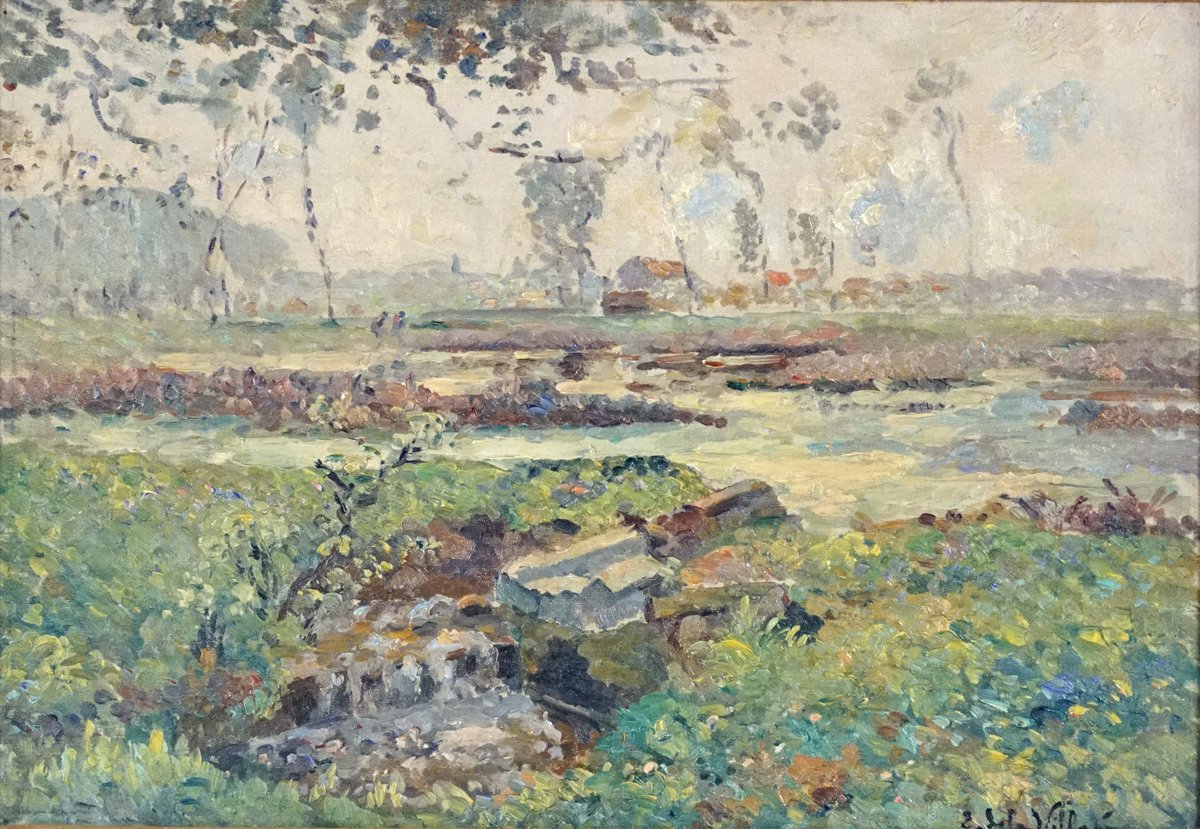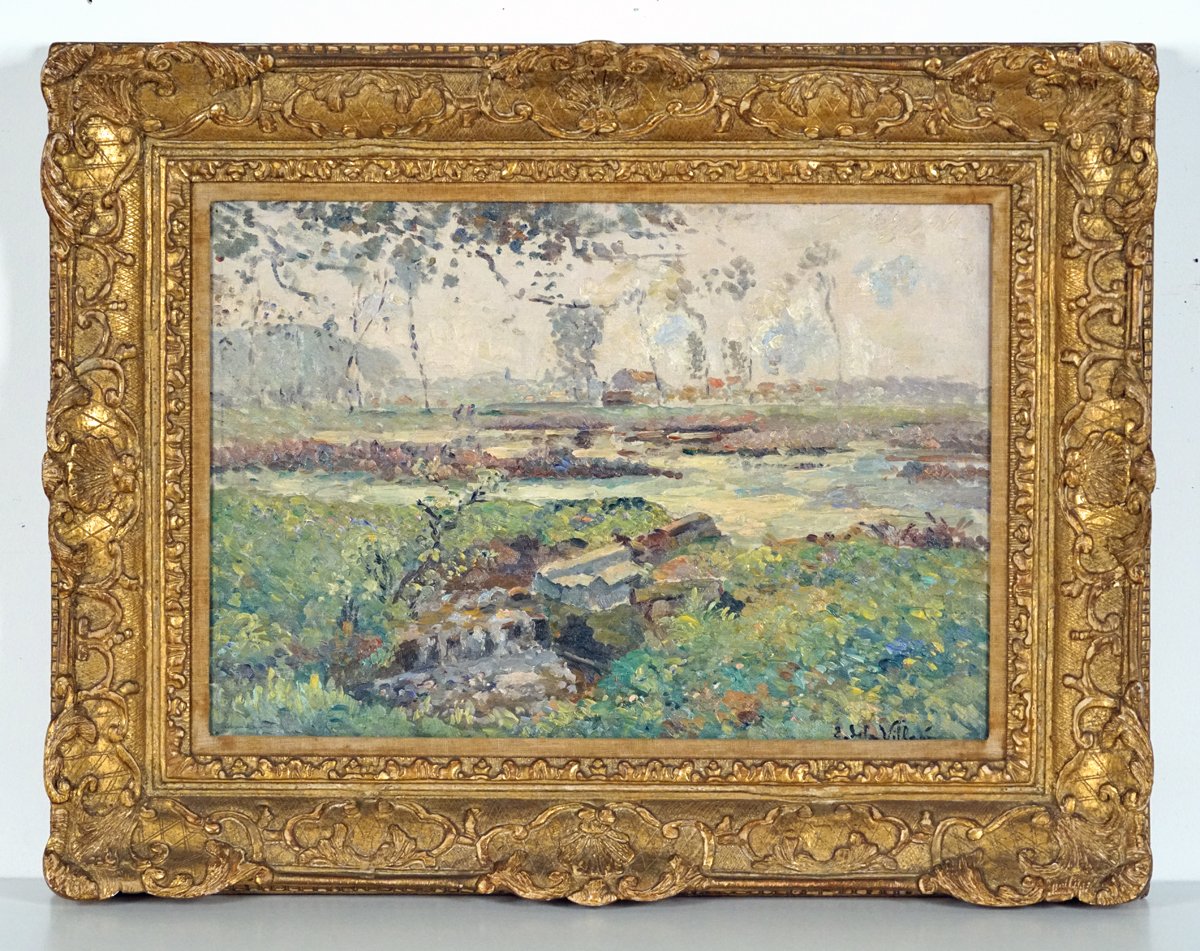Paintings
Emmanuel Victor Auguste Marie de la Villeon
French, 1858–1944Paysage au Bord de la Riviere
Oil on canvas16 by 22 in. W/frame 24 by 30 in.
Signed lower right
Provenance:
Private Collection CA.
Le Trianon Fine Art & Antiques
See Artist Bio below.
Emmanuel Victor Auguste Marie de la Villeon
French, 1858–1944The artist, with full title Victor Emmanuel Marie Auguste Comte de la Villéon, was one of the last great French Impressionists. He is described in his artistic character as the painter of harmony, balance, quiet joy and serenity.
De La Villéon came from an old Breton noble family. In 1880 he started at the Academie Julian in Paris, where he initially paid homage to the style of painting, École de Barbizon. But soon he tended to Impressionism in the manner of Van Gogh and Seurat and debuted at the Salon des Independants in 1888 with great success. His works have been shown in the following Salon Nationale des Beaux-Arts and the Salon d’Automne in 1903. Today, his birthplace Fougeres and the local museum Emmanuel de la Villéon is an international cultural tourist attraction.
Emmanuel de la Villéon was born in Fougères in in 1858. Fougeres is in the heart of Brittany, and the de La Villéon home is a great house overlooking the ramparts of the city. His father what Count Arthur de La Villéon; Emmanuel’s mother was Disonie de la Hubaudiére, who was young and tenderly loved by her five children, and her early death cast a veiled melancholy over the life of Emmanuel.
Emanuel wanted to paint. Finances were no problem for the family, but he had to secure his father’s approval of his plan to go to Paris to study art. Count de La Villéon finally agreed and escorted the young man to Paris himself. After trying several studios, he finally decided on the Académie Julian, where he remained for five years until in 1885.
In 1888 he made new friends who shared his enthusiasm Vincent Darasse, Maurice Chabas, Albert Besnard, Maxime Maufra and Carolus-Duran, who was a close friend to Monet as well.
In 1892, Emmanuel de La Villéon married Thérèse de Baudreuil. She was a charming woman of a very musical family, and she and her husband shared a love for classical music. Mozart became de La Villéon’s favorite composer. In ancient years, with the advent of radio, de La Villéon listened to Mozart while he painted and often said, “Mozart is my painting.”
From 1890 on, the tempo of painting and exhibitions mounted for en La Villéon. He had paintings in group exhibitions in Angers, Rennes, Paris and Bordeaux, and there were one-man shows of his work in Paris, where he became a member of the Salon d’Automne.
In 1918, nine large paintings by de La Villéon were Exhibited in America, and his work also went to the great salons and one-man exhibitions in leading galleries in Paris. Three of his paintings were purchased by the French government.
He spent his years with his second daughter, at Autrans, then in Vienne, and finally in Paris, surrounded by his children and grandchildren who adored him.
When the Second World War broke out, Emmanuel de La Villéon, still painting, divided his time between Paris and Yonville, where his third daughter lived. In November 1943 he went to Paris to make final preparations for an exhibition, and, in January, contracted pneumonia. He died on January 9, 1944.



